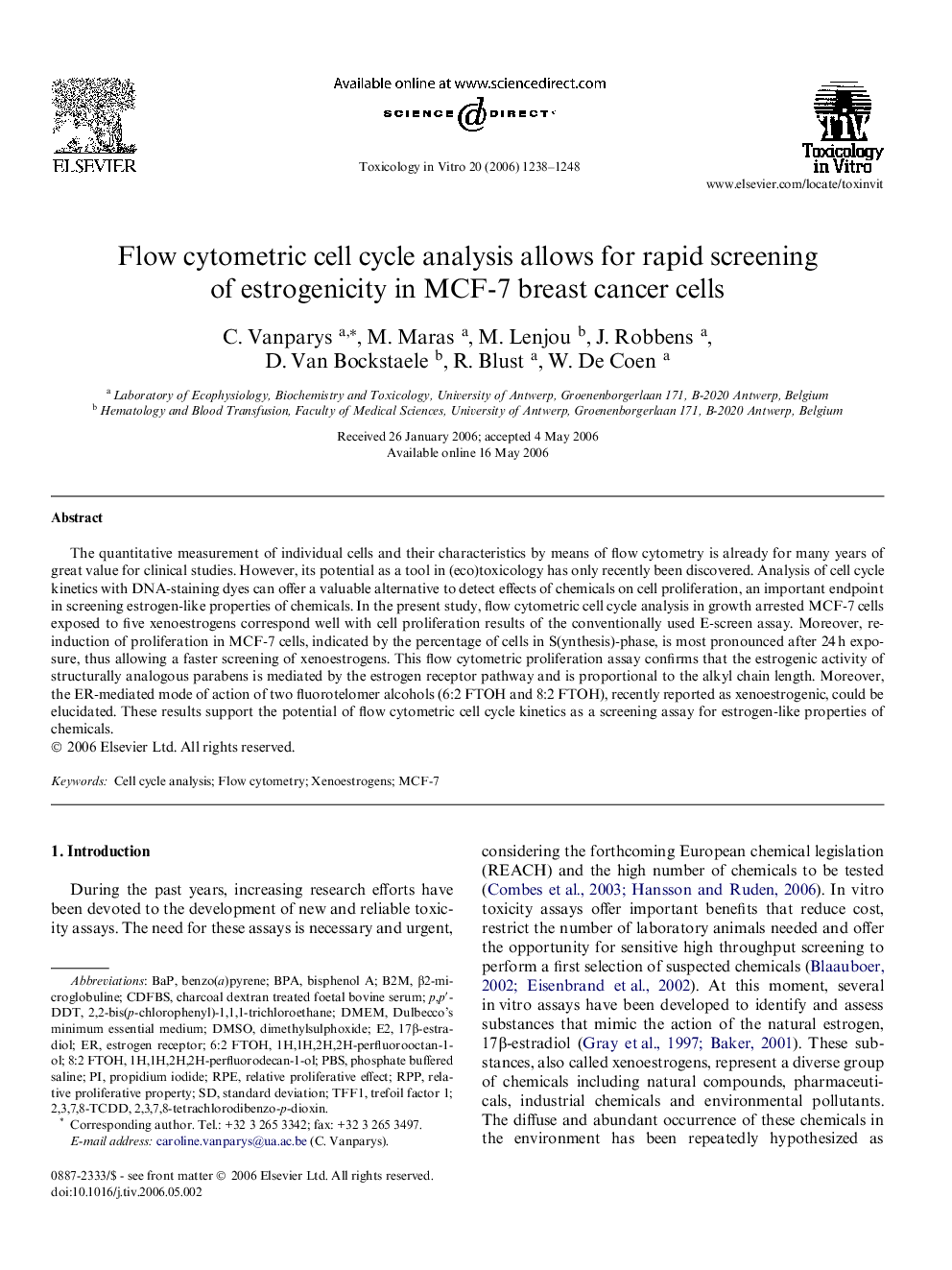| Article ID | Journal | Published Year | Pages | File Type |
|---|---|---|---|---|
| 2603983 | Toxicology in Vitro | 2006 | 11 Pages |
The quantitative measurement of individual cells and their characteristics by means of flow cytometry is already for many years of great value for clinical studies. However, its potential as a tool in (eco)toxicology has only recently been discovered. Analysis of cell cycle kinetics with DNA-staining dyes can offer a valuable alternative to detect effects of chemicals on cell proliferation, an important endpoint in screening estrogen-like properties of chemicals. In the present study, flow cytometric cell cycle analysis in growth arrested MCF-7 cells exposed to five xenoestrogens correspond well with cell proliferation results of the conventionally used E-screen assay. Moreover, re-induction of proliferation in MCF-7 cells, indicated by the percentage of cells in S(ynthesis)-phase, is most pronounced after 24 h exposure, thus allowing a faster screening of xenoestrogens. This flow cytometric proliferation assay confirms that the estrogenic activity of structurally analogous parabens is mediated by the estrogen receptor pathway and is proportional to the alkyl chain length. Moreover, the ER-mediated mode of action of two fluorotelomer alcohols (6:2 FTOH and 8:2 FTOH), recently reported as xenoestrogenic, could be elucidated. These results support the potential of flow cytometric cell cycle kinetics as a screening assay for estrogen-like properties of chemicals.
